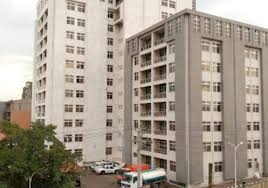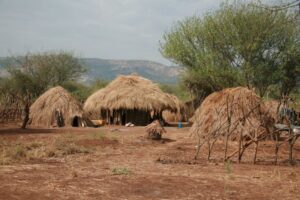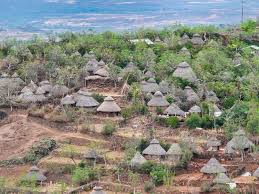Akaki Kality, located in the southern outskirts of Addis Ababa, is one of the city’s most industrialized and rapidly developing districts. Known for its industrial zones, factories, and expanding residential areas, Akaki Kality plays a crucial role in Ethiopia’s economy while also offering a growing community for its residents. As one of the key industrial hubs of Addis Ababa, the district is driving the city’s economic growth, yet it also offers a unique balance between industrialization and residential life.
A Strong Industrial Backbone
Akaki Kality is synonymous with industry. It has long been home to many of Ethiopia’s major factories and industrial complexes, producing everything from machinery and construction materials to consumer goods and textiles. The district’s industrial zones continue to expand, attracting both local and international businesses.
1. Industrial Zones and Factories
Akaki Kality hosts some of the largest industrial zones in Addis Ababa, including Akaki Industrial Zone and Kality Industrial Zone. These areas are the center of Ethiopia’s manufacturing sector, with industries focused on construction materials, chemicals, automotive assembly, textiles, and more. Many international companies have set up factories here, contributing to both local employment and Ethiopia’s export market. The factories in Akaki Kality provide jobs to thousands of people, helping to boost the local economy.
2. Economic Significance
The district’s economic significance cannot be overstated. As a primary industrial hub, Akaki Kality generates significant revenue for the city and the country. The availability of land for industrial use and proximity to major roads make it an ideal location for large-scale industries. With plans for further expansion, the district is expected to maintain its position as a driving force behind Ethiopia’s industrial growth.
A Hub for Transportation and Logistics
In addition to its industrial strength, Akaki Kality is an important hub for transportation and logistics. The district’s location on the southern edge of Addis Ababa, along the main roads leading out of the city, makes it a key gateway for goods moving in and out of the capital.
1. Major Highways and Transport Links
Akaki Kality is strategically located along the Addis Ababa-Adama Highway, one of Ethiopia’s busiest transport corridors. This highway connects Addis Ababa to key regions of the country, as well as to the Port of Djibouti, a vital route for Ethiopia’s imports and exports. The district’s proximity to this highway has spurred the growth of transportation and logistics companies, which manage the flow of goods between Addis Ababa and other parts of the country.
2. Railway Connections
The district is also served by the Addis Ababa-Djibouti Railway, which passes through Akaki Kality, enhancing its role as a logistics hub. The railway is critical for transporting goods to and from the port, reducing the cost of trade and improving Ethiopia’s economic competitiveness. The presence of this railway line further increases Akaki Kality’s strategic importance in the country’s industrial and logistics sectors.
Growing Residential and Commercial Areas
While Akaki Kality is often associated with industry, it is also experiencing significant growth in its residential and commercial sectors. As more people move to the district for work, the demand for housing and services has increased, leading to the development of new neighborhoods and commercial spaces.
1. New Housing Developments
Akaki Kality is seeing a rise in new housing projects, including apartment complexes, condominiums, and residential neighborhoods. These developments cater to both the district’s growing workforce and families looking for affordable housing options. The housing options range from modest apartments to larger homes, making it a diverse and increasingly attractive place to live for workers and professionals alike.
2. Commercial Growth
In response to the growing population, commercial centers, shops, and services are springing up across Akaki Kality. Supermarkets, cafes, restaurants, and shopping areas are emerging to serve the needs of the local community. The district’s commercial growth is creating new business opportunities and helping to transform Akaki Kality into a more self-sufficient and vibrant area.
Educational and Healthcare Facilities
As Akaki Kality continues to grow, so does its infrastructure. The district has a range of educational and healthcare facilities, which are expanding to meet the needs of its residents.
1. Schools and Educational Institutions

Akaki Kality is home to several public and private schools that serve the educational needs of its growing population. From primary schools to high schools, the district offers educational opportunities for children and young adults. In recent years, there has also been an increase in vocational training centers, which provide specialized skills training for workers in the district’s industrial sector.
2. Healthcare Services
The district’s healthcare infrastructure has also seen improvements, with the opening of new clinics, hospitals, and health centers. Residents have access to both public and private healthcare services, ensuring that they can receive the medical care they need close to home. As the population grows, further investments in healthcare are expected to keep pace with the district’s development.
Environmental and Infrastructure Challenges
With rapid industrialization and urban growth, Akaki Kality faces a number of challenges, particularly in managing environmental impacts and ensuring sustainable development.
1. Environmental Concerns
The presence of large factories and industrial activities has raised concerns about environmental pollution in the district. Air and water pollution, as well as waste management, are key issues that need to be addressed to ensure the health and well-being of the local population. There are ongoing efforts to enforce environmental regulations and encourage industries to adopt cleaner technologies, but more work is needed to balance industrial growth with environmental protection.
2. Infrastructure Development
As the district grows, there is a pressing need for improved infrastructure, including roads, public transportation, and basic services such as water and electricity. While some progress has been made, more investments are required to support the district’s rapid expansion and to ensure that residents have access to reliable public services.
The Future of Akaki Kality
Akaki Kality is poised for continued growth and development in the coming years. Its role as an industrial and logistics hub will remain central to Addis Ababa’s economy, while its residential and commercial sectors will continue to expand to accommodate the growing population.
1. Industrial Expansion
Plans for further industrial expansion in Akaki Kality will likely attract more businesses and investment to the area. With ongoing infrastructure improvements, including better roads and public services, the district is well-positioned to maintain its status as one of Addis Ababa’s key economic centers.
2. Sustainable Development
To ensure long-term growth, there is a need to focus on sustainable development in Akaki Kality. This includes addressing environmental challenges, improving infrastructure, and investing in social services such as education and healthcare. By balancing industrial growth with the well-being of its residents, Akaki Kality can continue to thrive as a dynamic and prosperous district.
Conclusion
Akaki Kality stands as a vital district in Addis Ababa, playing a central role in the city’s industrial and economic development. Its strategic location, combined with its strong industrial base and growing residential areas, makes it an essential part of Ethiopia’s future growth. As the district continues to evolve, Akaki Kality will remain a key player in shaping the economic and social landscape of Addis Ababa.





